Nebraska’s MoPac Trail East and West
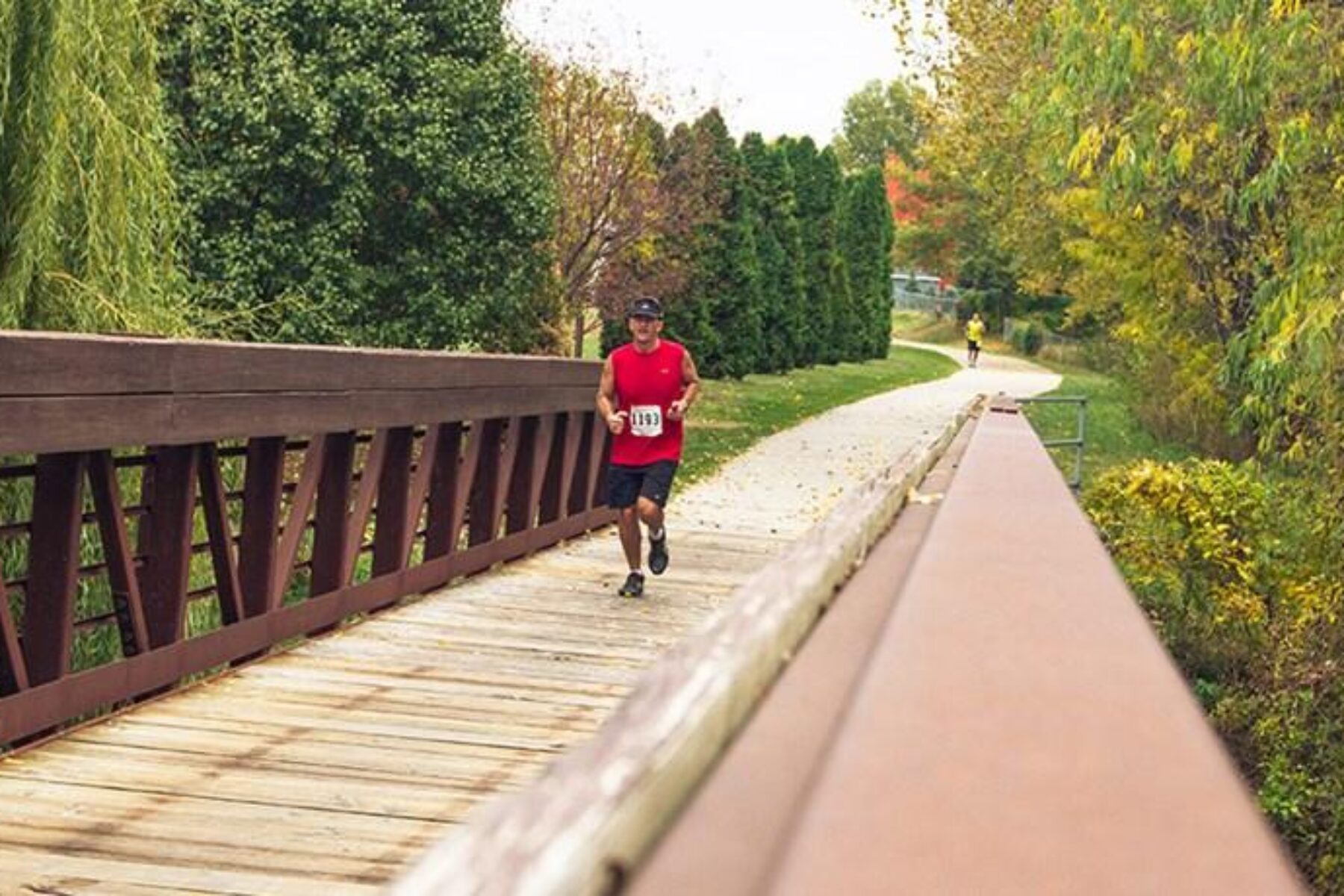
Trail of the Month: May 2015
“I think you’d be pleasantly surprised if you came here and experienced the trail opportunities that Lincoln offers.”
If you had to name a city with a longstanding and thriving trail culture, Lincoln, Nebraska, may not come to mind, but perhaps it should. The city currently boasts 131 miles of multi-use trail; to help put that in perspective, Portland and Minneapolis, two cities long touted as bicycle friendly, have 152 miles and 92 miles of off-road trail, respectively. One of the cornerstones of Lincoln’s network, the MoPac Trail (consisting of the seamlessly connected West and East segments) begins at the University of Nebraska campus in the heart of the city and stretches eastward 27 miles, just shy of Omaha’s doorstep.
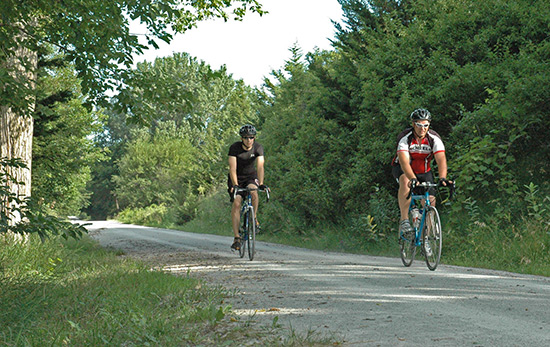
“I think you’d be pleasantly surprised if you came here and experienced the trail opportunities that Lincoln offers,” says Dan Schultz, resources coordinator for the Lower Platte South Natural Resources District, which manages the MoPac Trail East.
Exciting change is literally afoot in the Cornhusker State. Omaha currently ranks among the top 50 of America’s Best Bike Cities, and less than a dozen miles separate its trail system from Lincoln’s. The MoPac Trail, which will join them, is also a key piece of a bigger puzzle, the developing Quad State Trail, a regional network which will span more than 700 miles in four Midwestern states: Nebraska, Kansas, Iowa and Missouri. The momentum to close that gap between the state’s two largest cities and tie in to the larger system is built upon efforts that go back decades.
In 1989, the citizens of Lincoln voted 3-to-1 in favor of a bond issue to support the city’s burgeoning trail system. As an editorial in the Lincoln Journal put it, the result “reaffirms the responsible desire of Capital City residents; they want to maintain theirs as an unusually progressive and attractive community, being willing to pay for it.” Keep in mind that this was not too long after Rails-to-Trails Conservancy opened its doors in 1986 at the cusp of the rail-trail movement.
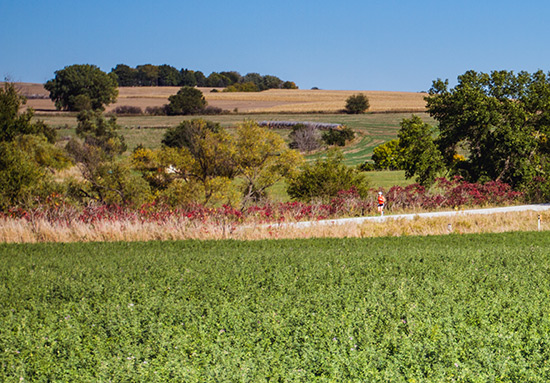
“It started the whole trail system in Lincoln,” says Great Plains Trails Network (GPTN) Founder Elaine Hammer of the bond initiative. GPTN, an all-volunteer organization, has since raised approximately $3.75 million over 25 years for local trail projects, including the MoPac.
In fact, Hammer and a handful of others believed in the trail’s potential so strongly that they mortgaged their own homes to help purchase the abandoned Missouri Pacific Railroad (MoPac) corridor when it came up for sale. Trail advocates had been burned a few years earlier when they were outbid by opponents in an attempt to purchase a portion of another nearby rail corridor, the Rock Island Railroad, and were determined not to lose another opportunity.
Today, the MoPac Trail offers that perfect mix of urban connection and rural escape. Through Lincoln, the trail is paved. It then becomes finely crushed limestone as it leads travelers out of the city and through picturesque countryside, native tallgrass prairie dotted with wildflowers, and lush woodlands. Schultz describes it as a “linear habitat” with turkeys, deer, rabbits, songbirds and other wildlife commonly sighted.
“That aroma follows you,” says nature lover Kathy Newberg of the fragrant wild plum thickets that bloom along the trail in late spring. Newberg, chair of the Nebraska Horse Council’s Trails Committee, has made jelly out of the fruit and says that mulberries also provide a sweet trailside snack. Large cottonwoods, oak trees and sumac, the latter of which turn bright red in the fall, add to the trail’s allure.
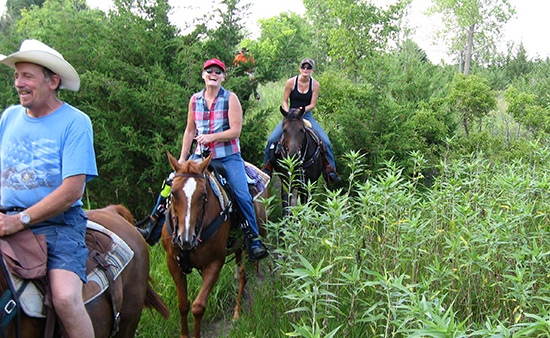
The passionate support of Newberg’s group keeps the equestrian trail that parallels the MoPac in tiptop condition. The grassy horse trail begins at the trailhead at 98th and A streets just outside of Lincoln and follows the rail-trail for almost its entire distance. A few times a year, you’ll see volunteers out there with clippers, handsaws and an assortment of other tools to keep overgrowth at bay.
“I like to turn around and look back to see what we’ve just cleared and how good it looks for riding,” says Newberg, who rides horses on the trail two to three times a week.
Although the MoPac sees a diversity of users, conflicts are kept to a minimum. The Trails Committee works hard to educate the public about how bicyclists, pedestrians and equestrians can best share the trail. Newberg advises, “If you see us coming, talk to us. If horses see something coming, they get kind of spooked, but if it’s a person, they know it’s okay. A simple ‘hello’ relaxes the horse instantly.”
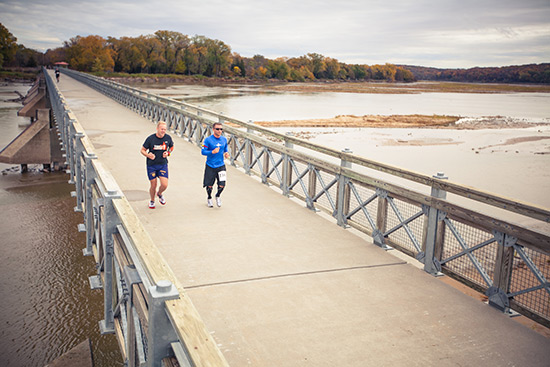
Like a carrot on a stick, the beautiful Lied Bridge is a tantalizing attraction that awaits the next step of the MoPac project. The pedestrian bridge stretches 1,714 feet across the broad swath of the Platte River, which divides Lincoln and Omaha. A remnant of the Rock Island Line, the bridge is a reminder that if the rest of that corridor had been saved, a rail-trail connection between the two cities—from the trail’s current terminus at the small community of Wabash to the river—would have been possible. Without it, trail advocates are looking at more challenging alternatives.
“We’re working with the state highway department to build the trail adjacent to some roads to complete it,” says Ross Greathouse, vice president of the Nebraska Trails Foundation. “We’re in the process of doing that, but it may take four to five years.”
Greathouse says it was “a giant move forward” when the bridge opened in 2002. He adds, “When it was completed, 700 people showed up. I’ve never seen anything like it. We had bands playing and everything.”
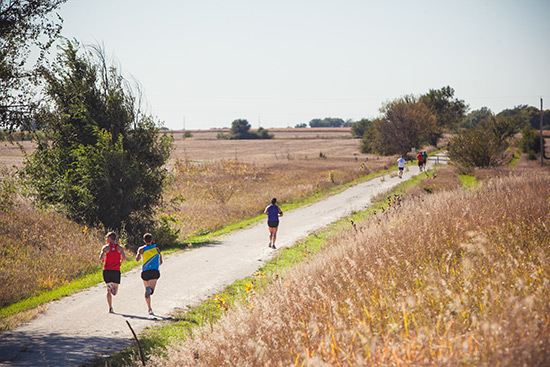
The fanfare of that trail bridge opening inspired Ben Cohoon to begin the Market to Market Relay, a running event that spans 78 miles along trails and roads between the two cities, which has sold out every year since its inception in 2008. Now the nation’s largest daylong relay with more than 4,000 registered runners, the event generates an estimated annual economic impact of nearly a half-million dollars from spending at local restaurants, lodging and retail outlets, and continues to build awareness and momentum for completing the trail system.
“I enjoyed exploring the city while I was running,” says Cohoon. “And I liked seeing new places. When I learned about the Lied Bridge, I thought, ‘There’s your concept: running from Omaha to Lincoln.’”
Another beloved event utilizing the MoPac is the Tuesday Night Nacho Ride, which takes place weekly from May through October. What began with just a handful of people a few years ago now averages about a hundred participants a night, with riders traveling from Lincoln to the One Eyed Dog Saloon in the old railroad town of Eagle.
“The restaurant and bar owners appreciate the trail and the business that it brings,” says Cohoon. “They really benefit from that.”
Greathouse points out that the events build connections between people, too. “The people that run in those relay teams, they really bond. They don’t know each other at the start, but they sure do at the finish.”
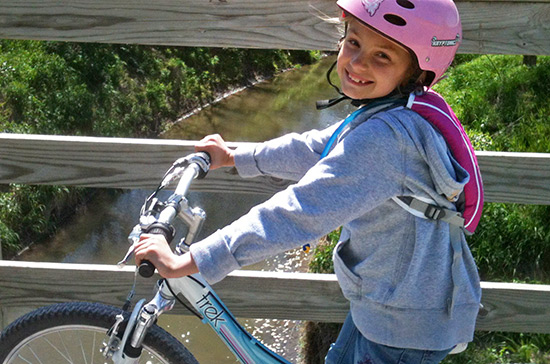
The Nacho Ride is something that local resident Matt Olson is looking forward to tackling this year with his 13-year-old daughter. “It’s a 20-mile round-trip so it’s been a stretch for Lyndsay, but I’m hoping we can do it this year!” says Olson.
For Greathouse, too, the incentive to develop and support these trails is a personal one. “I biked across Nebraska with my son when he was a teenager, and those are the fondest memories I have in my life.”

Donate
Everyone deserves access to safe ways to walk, bike, and be active outdoors.



